7 Tips for Planting Your Pond
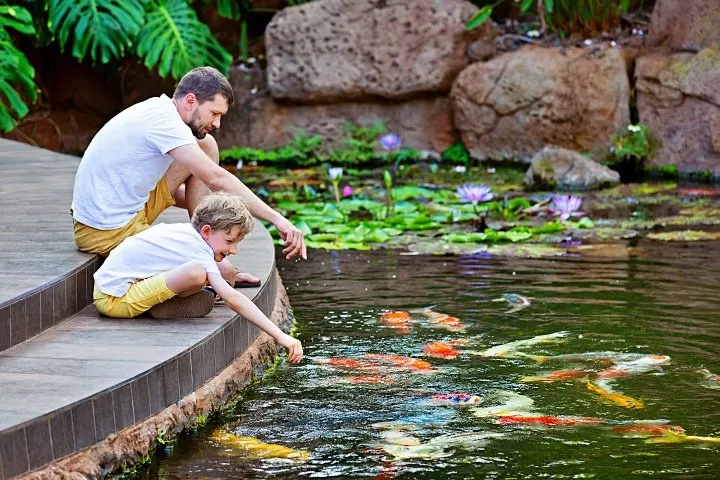
From colorful water lilies that dance on the pond’s surface to aquatic forget-me-nots that hug the edges of your water garden, it’s the amazing plants that put the “garden” in “water garden.” Things like color, height, and planting conditions are what you want to consider when it comes to planting your pond.
1. Create Interest with Variety
Random placement of plants with varying textures and colors create more interest than using plants that have all the same growth habit or leaf shape. Use a combination of waterlilies and marginal plants such as canna, arrowhead, aquatic forget-me-not, water iris, and more. The options are almost endless and you can recreate your water garden into something new every year simply by choosing different hardy plants.
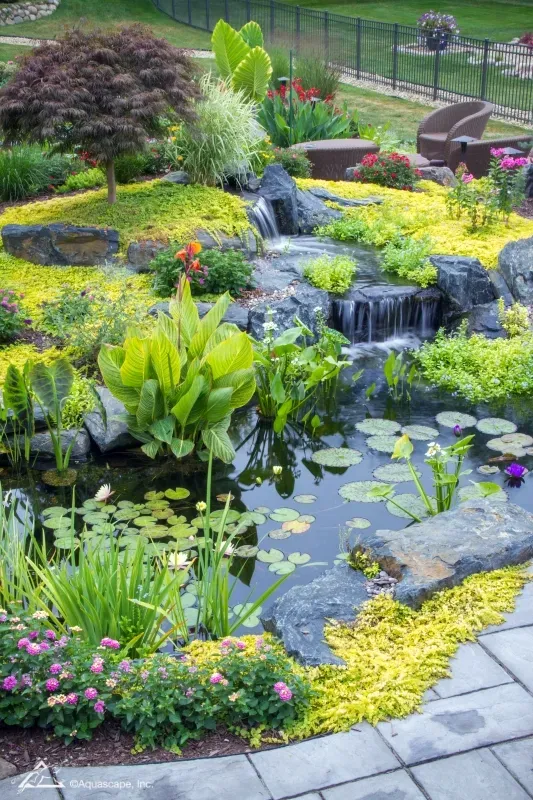
2. Play with Colors
Choose colors you like best and consider the type of lighting your water garden receives. Yellow, orange, and white help brighten shady areas, while cool blue and violet tone down the intensity of the sun’s rays. Experiment by mixing warm colors with cool ones. Yellow waterlilies look fabulous against a backdrop of blue water iris. Likewise, a purple waterlily such as Nymphaea ‘Violicious’ looks amazing in front of an orange canna lily.
3. Go Green
A soft, calming space is created by using different textures and shades of green foliage. The combination is effective on its own and mimics the style of a Japanese zen garden where texture takes precedence over an array of color. Play with color based on leaf selection alone, since you’ll find aquatic foliage in a range of colors such as dark green, lime green, and several variegated combinations.
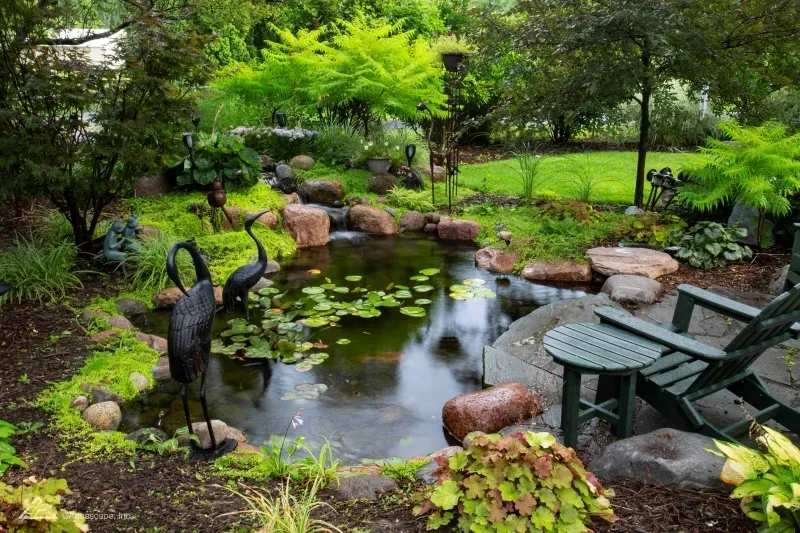
4. Know Your Plant Size
One of the biggest mistakes novice water gardeners make is failing to realize how big their pond plants might grow. Be sure to take height and width of the mature plant into consideration and allow enough space for future growth. If your plants do become crowded and overgrown, you can always divide them or thin them out just like your land perennials. Give extras to a friend or consider planting some in a container water garden to grace another area of your yard.
5. Short in Front, Tall in Back
This might seem like a no-brainer, but always put shorter plants in front of taller ones. Most likely, you’ll spend most of your time viewing your water garden from a deck or patio, so keep that sight line in mind when planting your pond. You’ll create more visual interest when you have a mix of tall and short plants.
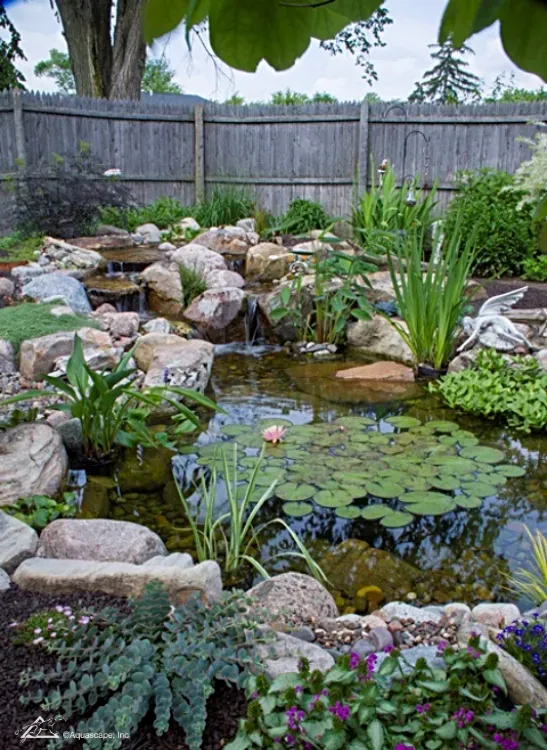
6. Group Pond Plants Together
Interior decorators tell you to group like objects together when decorating your home, to create visual impact. Use this same principle when planting your pond. Plant a row of marsh marigolds along a stretch of the ponds edge, as opposed to dotting them here and there in single locations.
7. Consider Each Plant’s Needs
Be mindful of how much sun your aquatic plants require, along with their planting depth. If a plant requires full sun, that’s a minimum of 6 hours of unobstructed (ie not dappled shade) sun per day. If you’re not sure what your plant needs, ask the pro at your local garden center or search online for information.
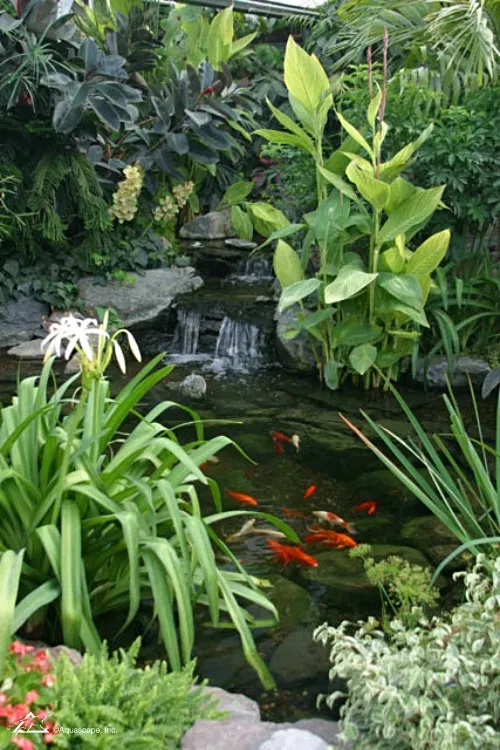
You’ll want to ensure an interesting mix of aquatic plant types for your water garden. Plant a few marginal at the pond’s edge, include colorful water lilies or even a lotus, add floating plants like water lettuce, and include submerged plants to help add oxygen to your pond. Variety is the spice of gardening life, so don’t be afraid to experiment … or follow our handy planting guides below!
Small Pond: Plant Placement Ideas
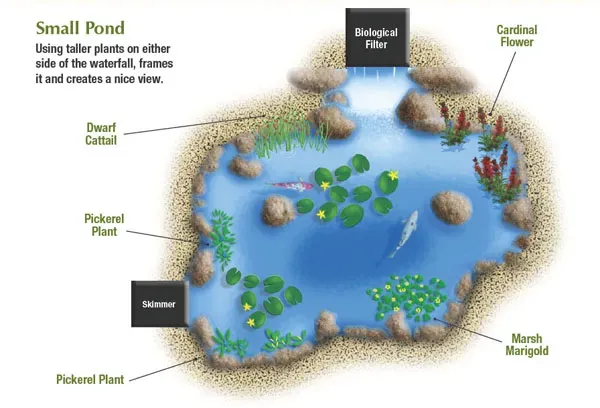
Medium Pond: Plant Placement Ideas
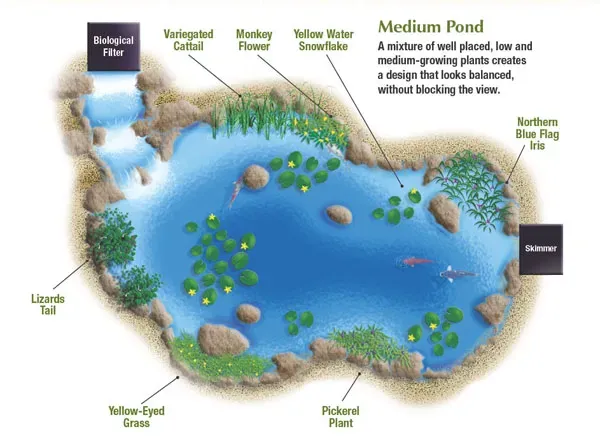
Large Pond: Plant Placement Ideas

